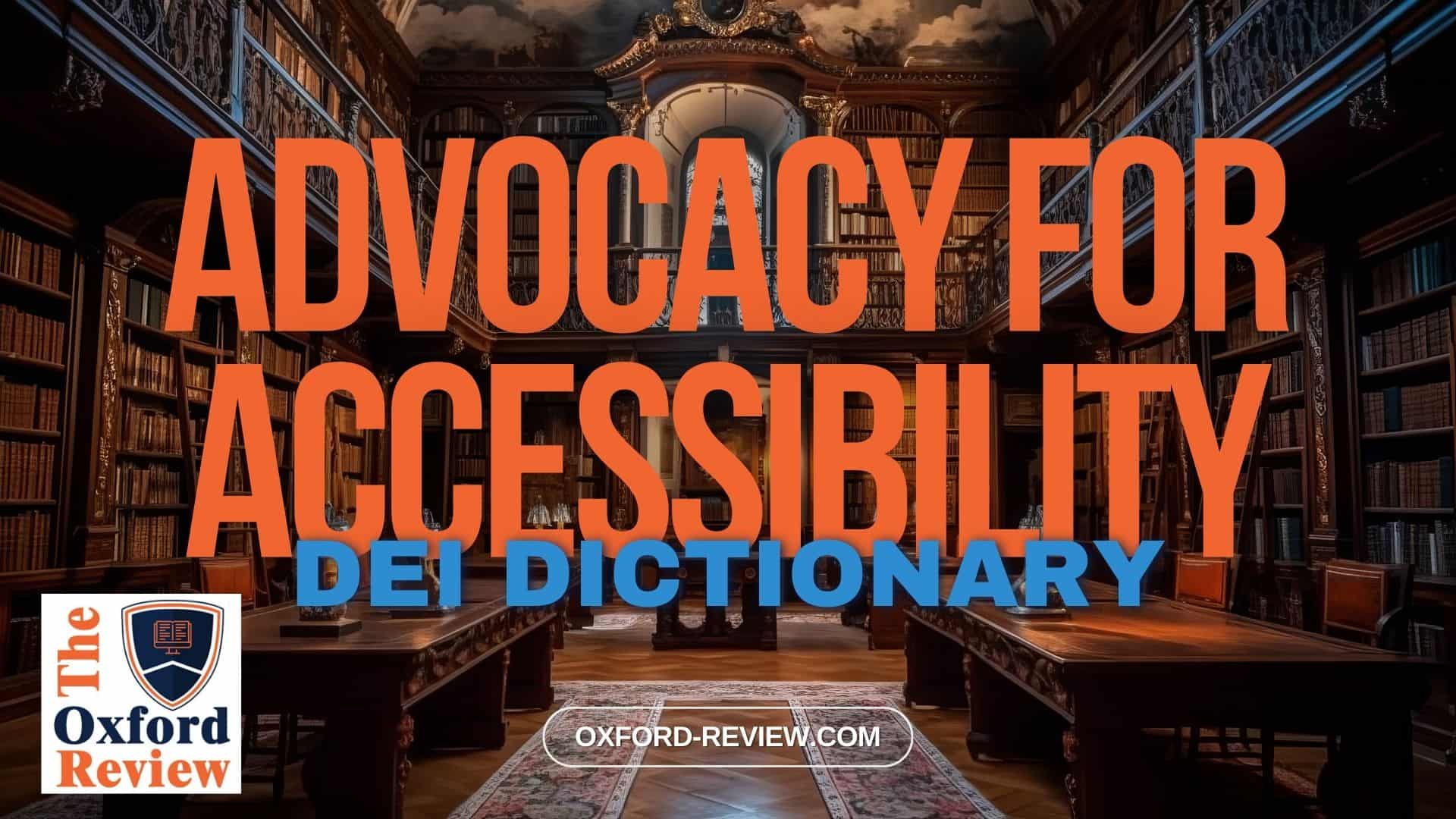Advocacy for Accessibility – Definition and Explanation

Unlocking Inclusivity: Advocacy for Accessibility in Diversity Initiatives
In the sphere of Diversity, Equity, and Inclusion (DEI), Advocacy for Accessibility stands as a fundamental principle, striving to ensure that all individuals, regardless of their abilities, can actively participate and contribute to society.
Definition:
Advocacy for Accessibility refers to proactive efforts aimed at promoting equal access and opportunities for individuals with disabilities. It encompasses advocating for inclusive environments, technologies, policies, and practices that eliminate barriers and foster participation, thereby empowering individuals to fully engage in various facets of life, be it education, employment, or social interactions.
The Significance of Advocacy for Accessibility in DEI Initiatives:
Incorporating Advocacy for Accessibility into DEI initiatives is paramount for cultivating environments that embrace diversity in its entirety. By championing accessibility, organisations not only comply with legal obligations but also nurture a culture of empathy, respect, and belonging. Moreover, fostering inclusivity enhances innovation and creativity by tapping into a diverse pool of perspectives and talents.
Objectives of Advocacy for Accessibility:
- Raising Awareness: Advocacy for Accessibility seeks to heighten consciousness regarding the challenges faced by individuals with disabilities and the importance of creating inclusive spaces.
- Policy Advocacy: It involves advocating for the formulation and implementation of policies that mandate accessibility standards across various domains, including digital platforms, infrastructure, and public spaces.
- Educating Stakeholders: Advocacy efforts aim to educate stakeholders, including employers, educators, and policymakers, about the benefits of accessibility and the strategies to integrate it effectively.
- Promoting Universal Design: Advocacy for Accessibility encourages the adoption of universal design principles to create products, services, and environments that are usable by all individuals, regardless of their abilities.
Real-World Example: Accessible Transportation
A notable example of Advocacy for Accessibility is evident in the realm of transportation. In many cities worldwide, advocacy groups and individuals have campaigned for accessible public transportation systems, including buses, trains, and subway stations. These efforts have led to the implementation of features such as wheelchair ramps, audio announcements, and tactile indicators, enabling individuals with disabilities to navigate and utilise public transportation independently.
Conclusion:
Advocacy for Accessibility serves as a beacon of inclusivity in DEI initiatives, fostering environments where everyone, irrespective of their abilities, can thrive and contribute meaningfully. By embracing this ethos and integrating accessibility into every facet of society, we pave the way for a more equitable and enriching future for all.
Be impressively well informed

Get the very latest research intelligence briefings, video research briefings, infographics and more sent direct to you as they are published
Be the most impressively well-informed and up-to-date person around...
